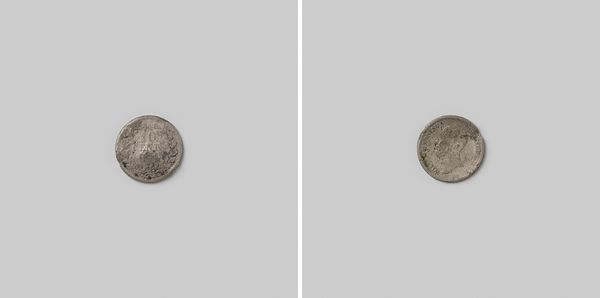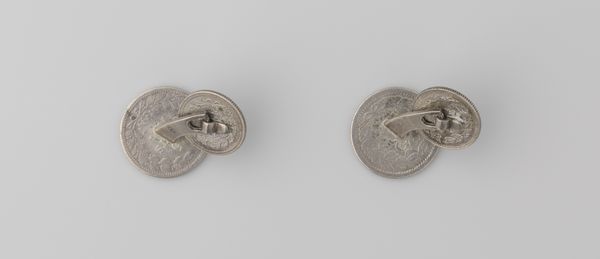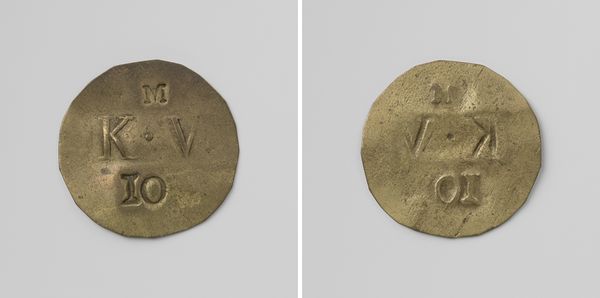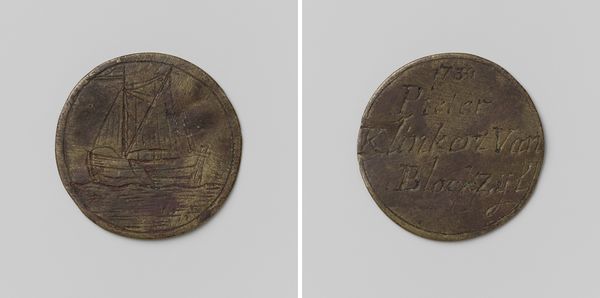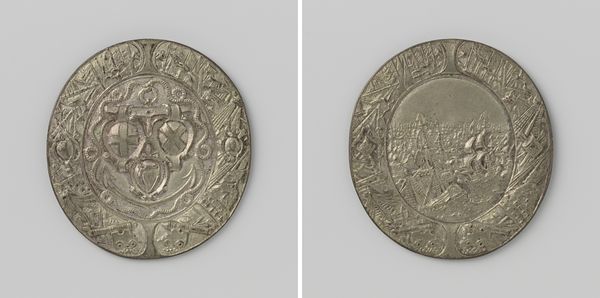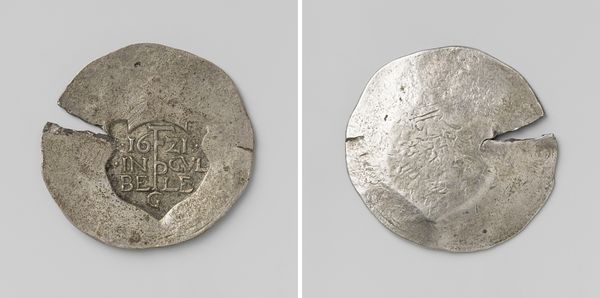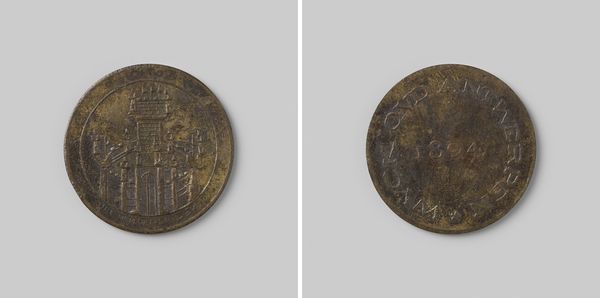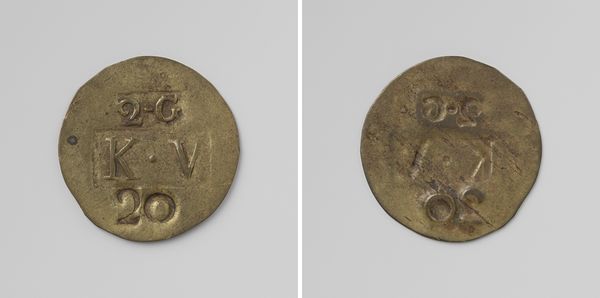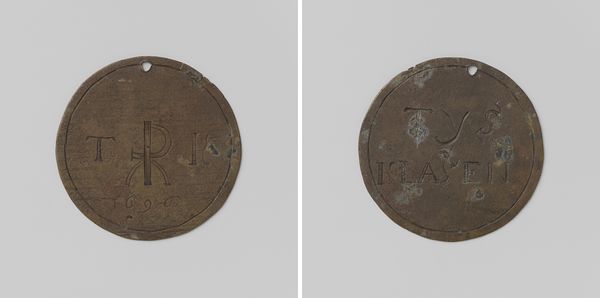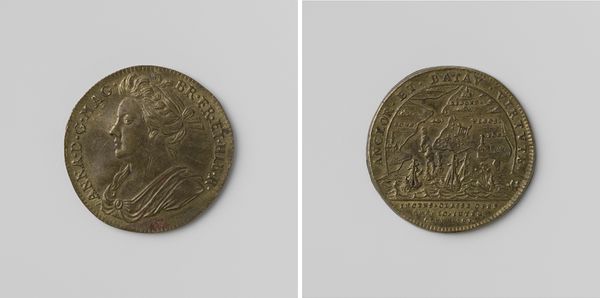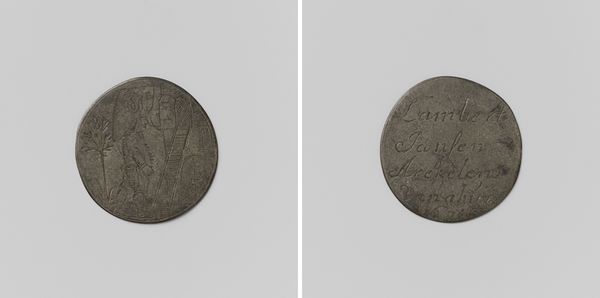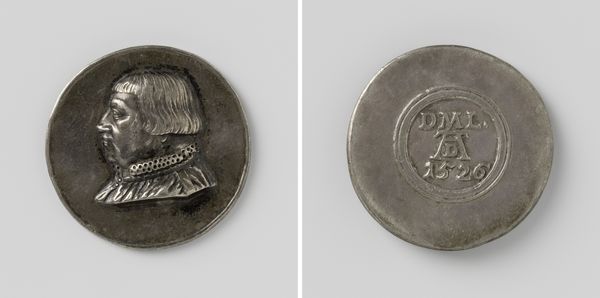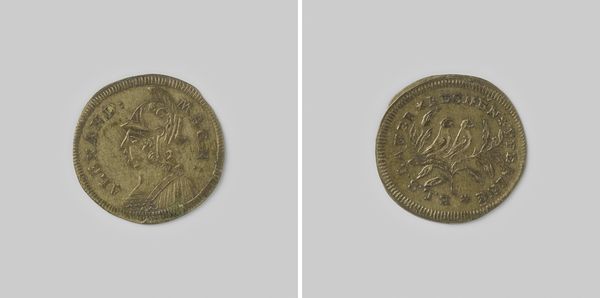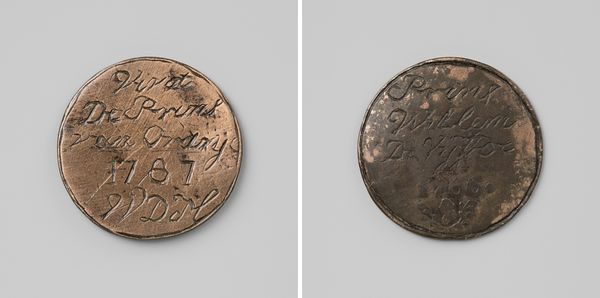
Oorlog op Java, groot draagteken uitgereikt aan de deelnemers, ter ere van Willem I Frederik, koning der Nederlanden 1830
0:00
0:00
davidvander18041879kellen
Rijksmuseum
metal, bronze, sculpture
#
portrait
#
medieval
#
narrative-art
#
metal
#
sculpture
#
bronze
#
sculpture
#
history-painting
Dimensions: length 4.3 cm, length 3.5 cm, length 3 cm, width 3 cm, weight 18 gr
Copyright: Rijks Museum: Open Domain
Editor: Here we have "War in Java, large badge awarded to participants, in honor of Willem I Frederik, King of the Netherlands," created in 1830. These bronze commemorative medals are at the Rijksmuseum and made by David van der Kellen. I am struck by their tactile nature, and also that they exist in such abundance. What does this multitude of objects signify to you? Curator: That abundance speaks volumes about the social and political objectives of this type of object. Consider that medals such as these were awarded to Dutch soldiers involved in the Java War from 1825 to 1830, a brutal and costly colonial conflict. The awarding of medals en masse became a tool of nation-building, a way to manufacture consent and bolster support for colonial policies by the Dutch monarchy. How does seeing them in quantity like this change your impression? Editor: I suppose I hadn't thought of that so literally before. Seeing a single medal, you might consider individual heroism. Presented as a collective, they’re less about individual recognition and more about reinforcing the legitimacy of the colonial project and of King Willem I. Curator: Exactly. Medals and commemorative objects operate in the public sphere. So, how does thinking about their original intended distribution affect your understanding of these objects? Editor: I now recognize that the political purpose outweighs any artistic merit, and the display here is very evocative. It reminds me that history is made of these small pieces of metal, and choices made for political advantage. Thanks for shining a light on how to critically appraise how political decisions can influence art’s production and our subsequent interpretations. Curator: Indeed, this exploration shows the necessity of engaging art history critically. We should consider all layers of history to broaden and contextualise the impact and legacy of artworks.
Comments
No comments
Be the first to comment and join the conversation on the ultimate creative platform.
